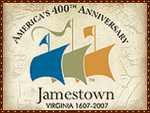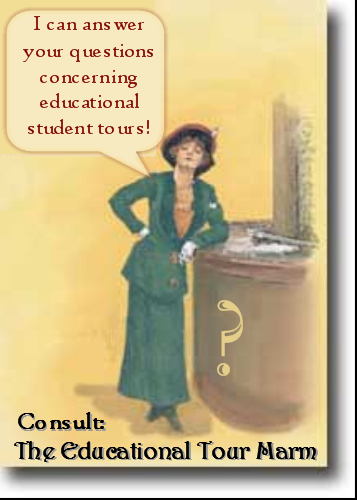MUSEUM MONDAY # 1 - Overnight Visits
 The current blockbuster movie, NIGHT AT THE MUSEUM promises to have the same affect on museum attendance as National Treasure had on Independence Hall and the National Archives.
The current blockbuster movie, NIGHT AT THE MUSEUM promises to have the same affect on museum attendance as National Treasure had on Independence Hall and the National Archives.
I'll support anything that gets students interested in history, science, and museums by going out of my way to design a program inserting some components reflecting current movies, TV shows, or music.
In the words of Theodore Roosevelt, "Bully!".
Personally, I've had a love affair with museums ever since my mother enrolled me in several hands-on programs offered by various New York museums. For one or two Saturdays a month from the age of 9 through 16, I toured; I touched; I learned about acquisitions and display; and I sketched. I could only imagine what my reaction would have been to an overnight program in the Metropolitan Museum of Art, The Cloisters, The Brooklyn Museum, or The American Museum of Natural History! Pure bliss! (The Cloisters experience would have made me feel like a princess in a castle! And wouldn't a New York Public Library at 42nd Street overnight have been fun! These two are not really offered as overnights, I was just dreaming!)
Most students today don't have this background, or indeed, any experience with museums! They have no idea of how to visit a museum or even how an exhibit is planned, created, and maintained. Students, particularly on their respective class tours to Washington, DC, are routinely and most unceremoniously dumped at one of the Smithsonians on the National Mall; they run aimlessly through the museums until they reach the gift shop, cafeteria, cute students from another school, and/or restrooms. (It's a disgrace that I will tackle in another post at some point.)
Some years ago, while I was working for the pioneer educational tour operator, Educational Field Studies, that, alas!, no longer exists, we considered this problem and the owners decided to initiate a partnership with the Smithsonian Residents Program. The Residents hosted a short presentation in the Arts and Industry Building's, Discovery Theatre, called, The Museum of Me. This presentation was an introduction to museums and the content ranged from finding the artifact, to figuring it out, to fixing it, and featuring it. There was one more, 'f ', but I can't quite remember what it was, but you get the idea!
Unfortunately this program often came after our Smithsonian Museum visits, so I was obliged to introduce this subject to the students before their first museum visit and use the Museum of Me program as a visual reinforcement. They loved creating the, 'Typical American Teenager's Room at the Turn of the 21st Century' from a 22nd Century Perspective'. (Even the Dominoes pizza box pushed under the bed with a moldy, half eaten slice remaining, was included.) They were delighted to consider that their very rooms could be viewed as an exhibit and moment in history! Sometimes I would ask them to design a museum exhibit dedicated to one of their interests and/or collections.
Now with, Night at the Museum, students have become excited about visiting museums, especially the American Museum of Natural History (AMNH) in New York City (Ross' workplace in Friends!). And the chance to stay overnight has become very appealing to them.
Naturally, these programs are available to a limited number of groups (and the number of participants within these groups may also be restricted), but they should still be investigated as a possibility for your class' Educational Travel Program (ETP). Certainly the cost of a night at the AMNH is less than a quad occupancy room in a New York City hotel!
Invariably, a logistical problem does present itself for many out-of-town groups, particularly if these groups are traveling by air: the sleeping bag. For those who can include one as part of their baggage, fine. But if it seems cumbersome, I would suggest that you make arrangements with a store that is near the museum or facility (Target, K-Mart, Walmart, or discount sporting goods store) to sell you a number of inexpensive sleeping bags ($25 or less) and add it into the cost of the program. Many of these stores can give you a substantial discount if it is for a school trip and there is some volume. And what to do with the sleeping bags after the event? The students can either return with the sleeping bags or donate them to a homeless shelter. (If there are any other suggestions, please feel free to share them, that's what comments are for!)
One overnight experience that does not require sleeping bags is Pamplin Historical Park which is south of Richmond/Petersburg, Virginia in Dinwiddie. It can be easily inserted in a Williamsburg/Washington, DC program.
Not only is Pamplin a wonderful hands-on Civil War park that includes the superb National Museum of the Civil War Soldier, but I can personally vouch for their Overnight Civil War Adventure Camp. To say the overnight camp is awesome, would be an understatement! One of my student groups inaugurated the overnight program.
The visit to the other sites in the park (part of which has been designated a National Landmark) and the museum (interactive with an audio program) can be before or after the overnight experience. A DVD of one of their two films can be purchased in advance to be played either in your classroom or on the bus before arrival; although they do show the film on-site. But why waste the time at a movie when you can be engaged in activities on-site? Curriculum materials and lesson plans are also available through the education department.
I always add in a yummy fried chicken and pulled pork buffet lunch through their food service for the groups, especially after the program; it includes a killer seasonal fruit cobbler!
The military experience starts around 3:00 PM when the new 'recruits receive their uniforms (Union or Confederate - split 50/50) and are mustered in. This is a complete program with both indoor and outdoor activities including drilling, tactics, hands-on discoveries, demonstrations, and a campfire. (The photo above shows Wisteria. one of the historic reenactors, demonstrating a tourniquet in preparation for an amputation. Obviously one of my students thinks this is hilarious!)
The sleeping arrangements vary from a large bunkhouse to pup tents. There are three inch vinyl-covered mattresses which are quite comfortable; a bottom sheet and blanket is provided. (All recruits should bring their own top sheets, pillows, and towels.) During the past two years, I have experienced almost all weather conditions during encampments including torrential rain (twice) and I am glad to report, all remained dry inside huts and tents! Outside, was another story!
The staff are fun and engaging; the program is well-paced and continually keeps the interest of the recruits.
I also suggest all wear long, traditional jeans in any sort of weather or temperature (which not only is practical, but in keeping with historic accuracy), closed shoes (lots of walking and running in tall grass), sweatsuit to sleep in, and bring bug repellent as there are times one is belly to the ground.
Remember that you and your students are going back to the Civil War era. It is important to convey to your students that they need to play the game by following all instructions and orders. There are ways to discipline the troops, but they would prefer not to do that. Fully prepared and cooperative students get the most out of this program.
I am sure that with the popularity of Night in the Museum many more museums will be offering overnight programs to student groups, scouts, and families. Call your favorite museum and ask the education department if one is available, or will be in the future.(And let me know!) If you are contemplating taking your class to the East Coast, you might want to include an overnight program during the course of your ETP. I have been offering overnight programs as part of my East Coast itineraries for a couple of years, and the results have been remarkable!
Below is a sampling of interesting overnight programs:
California:
San Bernardino County Museum Museum Youth Club
Illinois:
Field Museum - Dozin with the Dinos
Virginia:
Pamplin Historical Park Civil War Adventure Camp
Virginia Air and Space Museum Overnight Program
Washington, D.C.
International Spy Museum Operation Secret Slumber
Philadelphia:
Independence Seaport Museum Seaport Slumber
New York:
Old Fort Niagara A Day and Night in the Fort
American Museum of Natural History - Sleepover
South Street Seaport: Overnight
Connecticut:
Mystic Seaport Mystic Seaport Overnight
Massachusetts:
Battleship Cove Camp Overnight/Camp Cove
ENJOY!
The Educational Tour Marm















2 comments:
I haven't seen Night at the Museum, but I'm excited at the idea that it is sparking interest for students to go to museums and explore history.
I recently took my own children (5 & 8) to a local historical museum, and they were inclined to charge right on through the whole thing. Thankfully, there were several interactive displays for kids that slowed us down a little. I tried to be patient because I remember being dragged to museums and historical sites and landmarks when was a child and not enjoying it much. However, I love museums and historical sites now, and I completely have my father to thank for that.
Welcome happychyck!
Thanks for commenting!
I think the key to a successful museum visit is to prepare them in advance for what they will be seeing (check out the museum's website for the contents of the exhibit and perhaps some background or story of one or two of the items) and just take one gallery or exhibit per visit. Trying to get through the whole museum becomes a blur and a chore. (Which is why I'm against planning visits to more than two Smithsonians per day in Washington.)
In most cases I dislike interactive (although it is so well done at Pamplin Historical Park) because it takes out the imagination and critical thinking skills.
So the next time you visit a museum with your children, have some sort of focus, choose one exhibit, and have the kids bring a sketch pad and a pencil (they can color whatever they've drawn back home.)
Encourage them to ask questions about what they see, share thoughts about color, design, display etc. and allow them to express and share their feelings. This can be done in art, history, and science museums.
Get personal; making a personal connection to the artist or subject is essential.
The museum experience can be one of introspection, and you would be surprised at what you can discover about your children!
We live in an era of the soccer mom/dad and have been neglecting culture. Wouldn't it be nice to also be known as a museum mom/dad?
Here's something neat to do with your children:
Dover Publications.com is a great resource for cultural and historic coloring books and kits. I've signed up for their Friday Samplers through Mary Davis. (I have no idea if Mary Davis is a real person!)
I have copied pages of their various coloring books and had my students color the picture in advance of the visit (a great bus or car activity!) and then compare their work to the artist's.
Recently the National gallery of Art had Kindred Spirts on display. Incredibly, Dover had that painting in one of their coloring books. There was a lively discussion of both use of color as well as opinions as to what the two subjects in the painting were doing. My eighth graders found that exercise a great deal of fun.
But remember: Almost every moment with children ought to be turned into a 'teaching moment'.
The Tour Marm
P.S. Be prepared for a visit from me!
Post a Comment